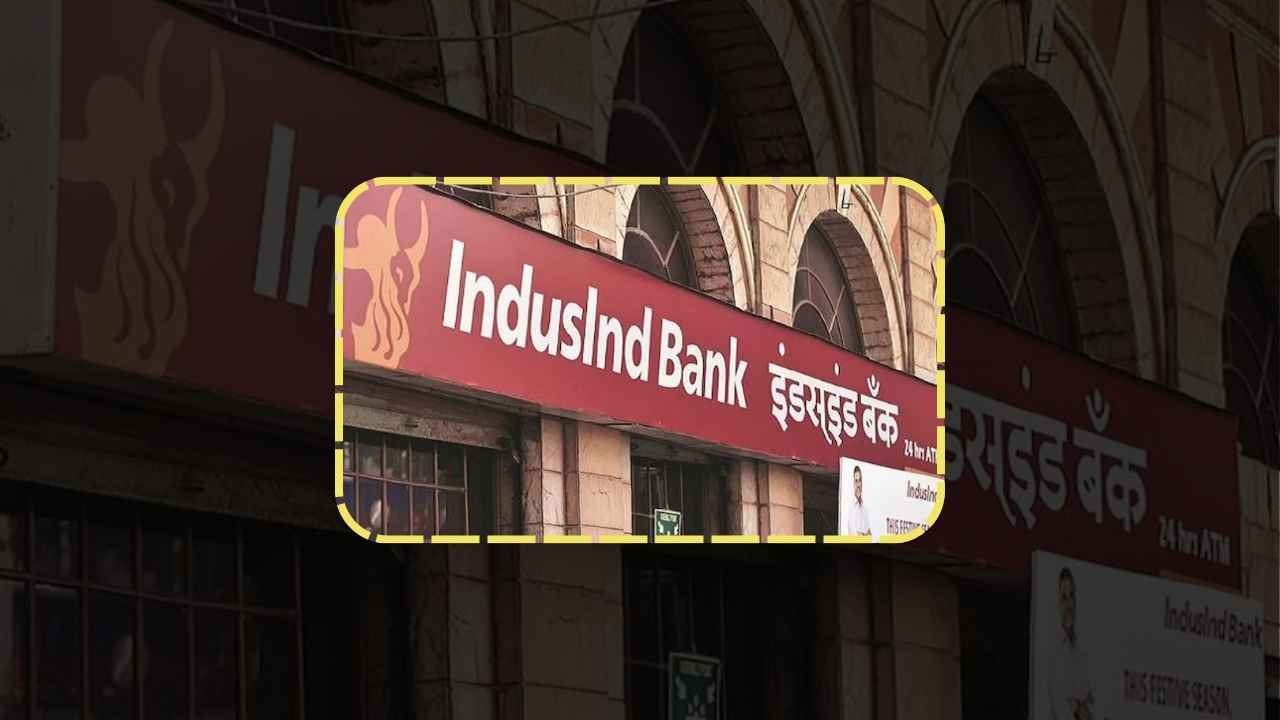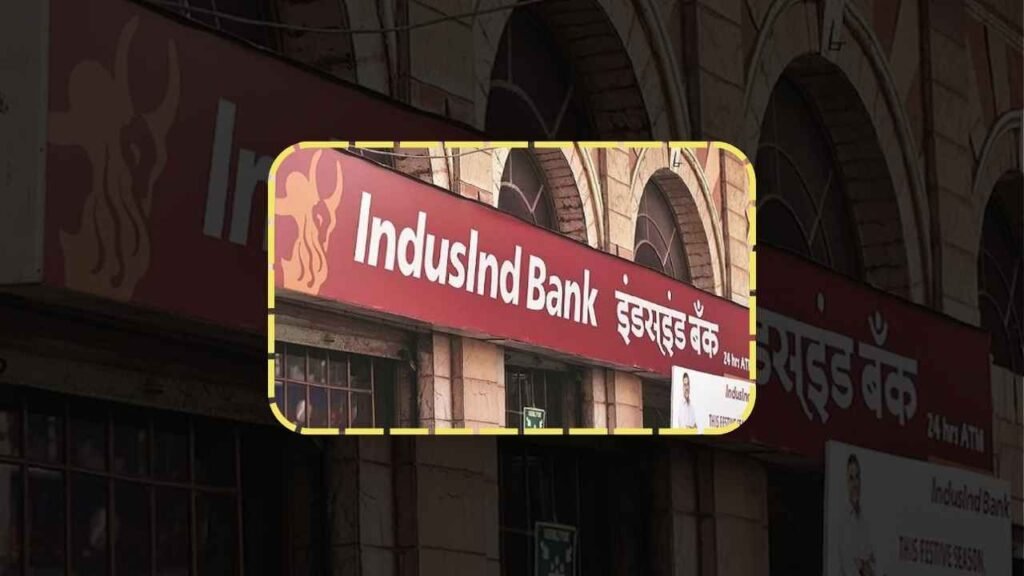IndusInd Bank experienced a significant drop in its share price, declining by nearly 19% on October 25, 2024, following the release of underwhelming financial results for the second quarter of fiscal year 2024-25. This decline is reportedly one of the steepest in over four years and has reduced the bank’s market capitalization by approximately ₹18,500 crore, lowering the share price to ₹1,042, a 52-week low.
IndusInd Bank Shares Plunge Following Q2 Results Amid Rising Microfinance Concerns

Key Reasons Behind the Share Price Decline
The primary driver for this sharp downturn is the increase in non-performing assets (NPAs), particularly within IndusInd Bank’s microfinance segment. The bank reported a 40% year-on-year drop in net profits due to rising provisions against microfinance loan defaults. Gross NPAs within this portfolio rose from 5.2% in Q1 to 6.5% in Q2, forcing the bank to increase its credit costs from 1.2% to 2.1%
.
Microfinance loans, which typically carry a higher risk due to the volatility of the borrower’s income sources, saw a surge in slippages. Macquarie Capital analysts pointed out that despite keeping other loan segments stable, IndusInd’s microfinance arm faced higher risks due to economic headwinds affecting recovery rates
.
Impact on Market Perception and Long-Term Outlook
The bank’s performance has led to a recalibration of its projected growth rates. Management reduced the expected growth in the loan book from 18-23% to a more conservative 16-18%, suggesting caution moving forward. Additionally, brokerage firms have cut the bank’s target price, with prominent brokers like Motilal Oswal revising their 12-month target from ₹1,749 to ₹1,549. The underperformance has also lowered IndusInd Bank’s standing among India’s most valuable banks
.
Analysts suggest that while near-term pressures may persist, improvements in the microfinance sector and consistent performance in other loan categories could stabilize the bank’s performance over time. IndusInd’s broader portfolio, including a 13% rise in net advances and a 15% growth in deposits this quarter, still reflects robust growth in key areas. However, the bank’s reduced CASA (Current Account Savings Account) ratio from previous quarters has raised additional questions regarding its funding strategy
.
Broader Economic Factors and Investor Sentiment
IndusInd Bank’s exposure to the volatile microfinance sector has underscored the risks that Indian financial institutions face in light of the broader economic landscape. The Reserve Bank of India’s current stance on interest rates and inflation adds an additional layer of uncertainty to the banking sector. For investors, the potential for recovery largely hinges on the bank’s ability to reduce exposure in high-risk loan segments and stabilize asset quality.
Despite the setback, institutional investors may view IndusInd Bank’s potential inclusion in the MSCI index as a positive factor, which could attract additional foreign investments and support the stock price recovery over the medium term
.
Outlook for IndusInd Bank and the Banking Sector
While IndusInd Bank’s stock faced a substantial hit due to Q2 results, experts believe the bank’s future performance will largely depend on its ability to address challenges in the microfinance sector and maintain stability in other high-performing segments. Investors will be watching closely for any further adjustments in loan provisions and asset quality improvements, as well as the impact of RBI’s upcoming regulatory decisions.
For now, the IndusInd Bank share price is in a challenging phase, but with a balanced approach to growth and risk management, the bank could potentially recover in the long term as it adapts to the evolving financial landscape in India.
ndusInd Bank Share Price: Analyzing the Sharp Decline Amid Q2 2024-25 Earnings Report
IndusInd Bank, a major player in India’s private banking sector, faced a significant setback as its share price plummeted nearly 19% following the release of its Q2 earnings report for the fiscal year 2024-25. The report revealed several areas of concern, particularly within the bank’s microfinance portfolio, leading to increased investor caution and a substantial drop in market capitalization.
Why IndusInd Bank Share Price is Falling: Key Factors from Q2 2024-25 Results
The IndusInd Bank share price drop can be attributed to several critical factors disclosed in the bank’s Q2 2024-25 earnings. Net profit fell by 40% year-on-year due to a steep rise in provisions related to microfinance slippages. This drop has made investors wary, especially as gross non-performing assets (NPAs) in microfinance rose from 5.2% in Q1 to 6.5% in Q2. The bank’s management cited economic challenges impacting microfinance collections, as many borrowers in this segment continue to face financial difficulties, resulting in higher credit costs
.
The rising NPAs within the microfinance sector were not the only challenge; overall profitability was further dampened by reduced net interest margins and slower growth in fee-based income. While IndusInd Bank’s other segments, such as retail lending, saw stability, the performance in microfinance has significantly impacted the bank’s outlook and investor sentiment.
Impact of IndusInd Bank’s Microfinance Slippages on Share Price Decline
The sharp IndusInd share price decline is largely attributed to the bank’s high exposure to microfinance loans, which have historically been high-risk assets. Despite efforts to maintain asset quality, the adverse economic conditions faced by microfinance clients have worsened recovery rates, leading to an increase in slippages and a surge in provisioning costs. As a result, the bank’s credit costs spiked from 1.2% to 2.1%, signaling potential ongoing challenges in this sector
.
Investors and analysts have raised concerns that IndusInd’s reliance on microfinance could continue to pressure its stock performance in the near term. This segment, while profitable under favorable conditions, tends to be vulnerable to economic downturns, particularly in rural areas where borrowers’ incomes can fluctuate unpredictably.
Profit Drop and Revised Market Cap for IndusInd Bank
The recent performance has led to a noticeable reduction in IndusInd Bank’s market cap, with nearly ₹18,500 crore wiped out in a single day. The drop in net profits, coupled with increased provisioning, has pushed IndusInd down in the rankings among India’s top private banks by market value, intensifying concerns among shareholders. In response to these developments, brokerage firms have adjusted their outlook, with Motilal Oswal and others revising their target price from ₹1,749 to ₹1,549
.
Revised Growth Projections and Target Price for IndusInd Bank
IndusInd Bank’s management revised its expected loan growth rates from an initial 18-23% to a more conservative 16-18%, highlighting the cautious stance due to the microfinance stress. Despite this, some areas of growth remain promising; IndusInd reported a 13% year-on-year increase in net advances and a 15% rise in deposits for the quarter. However, analysts note that achieving consistent growth may require diversified lending strategies to offset losses in higher-risk portfolios.
The drop in the IndusInd Bank share price has led many investors to question the bank’s long-term stability, with target prices reflecting a more cautious outlook. Several analysts have recommended close monitoring of the bank’s NPAs and provisioning costs in the coming quarters, suggesting that improvements in these areas could gradually restore investor confidence.
Broader Implications for the Indian Banking Sector: Share Price Analysis
The challenges faced by IndusInd Bank highlight the vulnerability of India’s banking sector, particularly private lenders with high exposure to sectors like microfinance. The banking sector share price analysis indicates a trend where investors are increasingly cautious about stocks with significant microfinance exposure, especially as the Reserve Bank of India continues its cautious stance on rate cuts and credit policies. IndusInd Bank’s performance serves as a reminder of the inherent risks within the microfinance segment, raising questions about the stability of other banks with similar asset profiles
.
Analysts predict that if the Indian economy stabilizes, particularly in rural areas, microfinance portfolios could see recovery. Until then, IndusInd Bank and other banks with similar exposure are likely to face ongoing scrutiny regarding asset quality and credit management.














